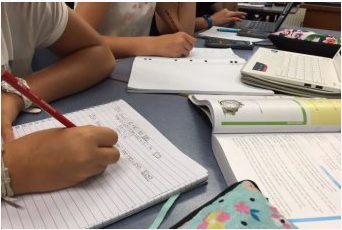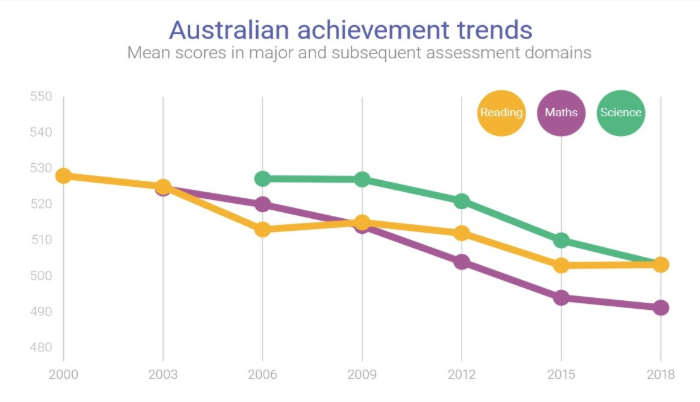Australia has plunged in global education rankings: latest PISA results

Where are we going wrong? Australian students continue to slide in maths, science and reading according to global results published yesterday. The 2018 Programme for International Student Assessment (PISA) reported that Australian students sat just slightly above the OECD average in maths literacy — its lowest level since the survey began. The study assessed 740 Australian schools and 14 000 students and found our students’ reading, science and maths results were all in a long-term decline.
PISA national project manager Sue Thomson described the results as a “wake-up call”. “We’re not giving them the skills that they need in maths or in reading or in science,” she said.
“We’re not giving them the same level of skills as they are in other countries. That is a concern, particularly in a global economy where our kids will compete with kids all over the world.”
Key points:
- The study assesses 600,000 15-year-olds from 79 countries every three years, comparing maths, reading and science performance
- The 2018 results show, on average, China, Singapore, Macau, Hong Kong and Estonia ranking in the top five overall. Australia, on the other hand, has slumped to 16, scoring an average of 503.
- Australia ranked 16th in reading, the domain PISA focuses on most and uses to generate its overall ranking scores. In maths and science, however, the results were less impressive, with Australian high school students ranking 29th in maths with an average score of 491, falling behind comparable western countries such as New Zealand, Canada and the UK. Asian countries such as China, Singapore and Hong Kong dominated the mathematics rankings.
-

Australia’s educational decline
Report card for States and Territories
There was an overall decline across the country in the PISA test, with the majority of states and territories experiencing lower results – even the ACT, which typically performs better than the rest of the country. Victoria was a standout as it recorded the smallest drop in the overall scores since testing began in 2000.
In reading, maths, and science, students in South Australia, Tasmania and the Northern Territory fell below the OECD average for the first time.
New South Wales, Victoria and Queensland met the average.
Overall, the report found Australian students had fallen behind by a full school year in maths, and almost a school year in reading and science.
Government response to the data
Dan Tehan, Federal education minister, is not surprisingly under pressure to explain what continues to go wrong with PISA and recommend a way forward. He said the results were “very disappointing” and should ring alarm bells. A meeting next week of state and territory ministers will provide a chance to reset the national education agenda, Tehan said, adding that a “de-cluttering of the curriculum” will be a priority in resetting literacy and numeracy standards.
“And we must be bold in doing so,” Tehan said. “Our students should be ranked among the best in the world.”
NSW education minister Sarah Mitchell called the results “very disappointing for NSW”.
“The PISA results show that we have a lot to do when it comes to lifting performance. These large-scale reforms are the right way to achieve that,” she said.
Next week there will be an education council meeting with ministers, which should serve as an ideal opportunity for Tehan to discuss results and policies. However, Victoria, NSW, Queensland and the ACT have already announced they’ll be launching their own reviews into the test.
Once the panic around these results dies down, we need to take a long, careful look at the data and what they mean for a more equitable and high-performing Australian schooling system.
Check out our blogs for more ideas and tips.
Boys Love LFB – Here’s what they have to say!
Get boys reading in the digital age
Why write? Tips for reluctant writers
Brought to you by Tanya Grambower
